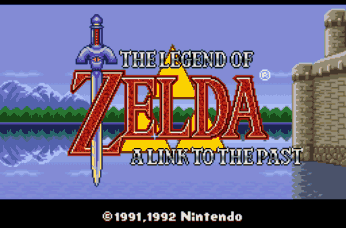

 |
 |
|
|

A Link to the Past, the best game for the Super Nintendo. Ever. I know that you all agree with me, if you don't than you must be from another planet. Released in 1992, this was probably the most highly anticipated game for the Super Nintendo. I remember how badly I wanted it when word of its development first came out. I got it for my birthday and I didn't come out of my room for weeks. The graphics were stunning, and the game play was incredible. The world was huge, and the idea of two parallel worlds was really innovative. This game also had an amazing storyline, which delved deeper into the world we know and love. When it first came out, the title of the game confused me. Little did I realize that this would actually be the sequel to a game that would come five years later. A Link to the Past returned to the overhead view used in the first Zelda game. The parallel-world idea that this game introduced would be reused many times throughout the Zelda series. It also introduced many weapons and ideas that would be used time and time again, such as the hookshot, ice and fire weapons, the spin-attack, the Master Sword, heart pieces, and multi-level dungeons. Long after its initial release for the SNES, newer versions would be created. It was re-released for the Game Boy Advance in 2002 as A Link to the Past & Four Swords. This game included the original A Link to the Past (with some modifications), and it included a special multiplayer mode called Four Swords. The Four Swords mode could only be used when one or more GBAs were linked together. There were numerous minor differences between the SNES and GBA versions of the game. The GBA version includes sound effects made by Link when he swings his sword (identical to the sounds in Ocarina of Time). The screen resolution is slightly lower in the GBA version, so the overall size of the view is reduced. The item submenu in the GBA version also has all four bottles listed individually, rather than opening a separate submenu as in the SNES version. Sparkling skulls and rocks were added to the GBA version, which give rupees when struck with your sword. The most interesting difference between the SNES and GBA versions is that the fabled Chris Houlihan room is no longer accessible. Although it still exists in the GBA ROM data, all references to it were removed from the code, and it is only accessible with hacking tools. There was also a little-known sequel to the game called (roughly translated) The Ancient Stone Tablets. This game was only released in Japan through the BS-X add-on for the Super Famicom. The add-on allowed people to download games via satellite and functioned like the Sega channel did many, many years ago (remember the Sega Channel?). The game was divided into four weeks, each of which could only be played for an hour. Ancient Stone Tablets included a few interesting features, such as voice-overs that gave hints about the game play. The game was only broadcast once a week for four weeks during March and April of 1997, and was rebroadcast once a year later. Now, thanks to the power of emulation, the game can be played again. Go here for more information on how to download and play Ancient Stone Tablets. English Title: The Legend of Zelda: A
Link to the Past
Release Dates:
|